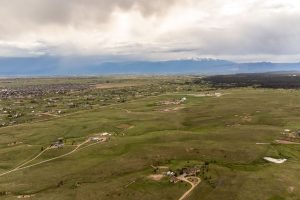Terry Stokka has lived in Black Forest for 29 years. He is president of the Friends of Black Forest, chairman of the Black Forest Land Use Committee and chairman of the Black Forest Water & Wells Committee.
In previous articles I talked about the new county master plan and zoning rules in the land development code (LDC). In this article, I would like to address the LDC in more detail.The purpose of the LDC is to ìimplement the master plan, promote predictability, consistency and efficiency, be fair to all (in the standards outlined) and establish reasonable standardsî among other purposes.By way of review, the county master plan is an advisory document meant to guide development with more broad, general recommendations. Despite being an advisory document, it has many specific statements and numbers that should be taken as a directive by the planners and county commissioners. As an addition to the master plan, the LDC has specific numbers and statements that expand the general guidance of the master plan so that everyone is treated fairly in land use decisions. It is very directive and as such it is a legal document that has the force of law behind it. As directive as it is supposed to be, there are still words like ìconformanceî and ìcompatibleî that require a judgment call on the part of the commissions in making land use decisions.Each time a land use issue comes before the El Paso County Board of County Commissioners, the county attorney reminds everyone that the hearing is a quasi-judicial hearing. That means the decisions must be based on legal documents such as the LDC and must not be influenced by personal preferences or pressure from those who support or oppose the issues at hand. After sitting through 25 years of BoCC hearings, I can give you plenty of examples where that guidance was not followed but maybe that will be a topic for a future article.The LDC has 73 pages of definitions all the way from ìadult arcadeî to ìzoning map.î It has 16 pages of tiny print that defines what you can and cannot do within each zoning category. The land uses are divided into the different zoning classifications like RR-5, RR-2.5, A-35 as well as the commercial zones. For example, beehives are allowed in RR-5 so the box will have an ìAî which means it is ìallowed.î If the box has an ìS,î it means you need a special use permit and the issue must come before the BoCC. A blank box means the use is not allowed in that zoning category.One property owner a few years ago owned a heavy equipment business and wanted to store equipment on his 5-acre lot that was surrounded by other residences so he applied for a variance, which is an exception to the rules. That use was not allowed in the RR-5 residential zone. The neighbors said they were adversely affected by the noise of the equipment, diesel fumes and the mess of old broken equipment, barrels and scattered parts. The neighbors had a valid case in that they bought their house expecting it to be a quiet neighborhood with fresh air and neat houses. The property owner had some right to use his property as he wished, but it had to be within the limits of the master plan and LDC. In the end, the commissioners granted the variance for storing the equipment on his lot. If someone feels that a neighbor is not following the LDC, they can file a code violation by going to the county website, https://www.elpasoco.com and filing a complaint. A code enforcement officer looks at the property; if there is a violation, the owner is notified and given a period of time to fix the violation. The owner can also file for a variance, and then the issue goes before the planning commission and the county commissioners. If no variance is permitted, the owner must correct the violation or the county will come in, fix the problem and charge the owner with the costs.You can find the entire LDC, all 2 inches thick, on the county website at https://www.elpasoco.com. If you have plans to build a barn or house, you will become familiar with the land development code because you will have to get building permits and be subject to inspections all along the way. It is a real hassle but has the good intentions of consistency, fairness and quality building construction and use.Editorís note: This is a March bonus column by Terry Stokka, who has a direct connection to this story.




